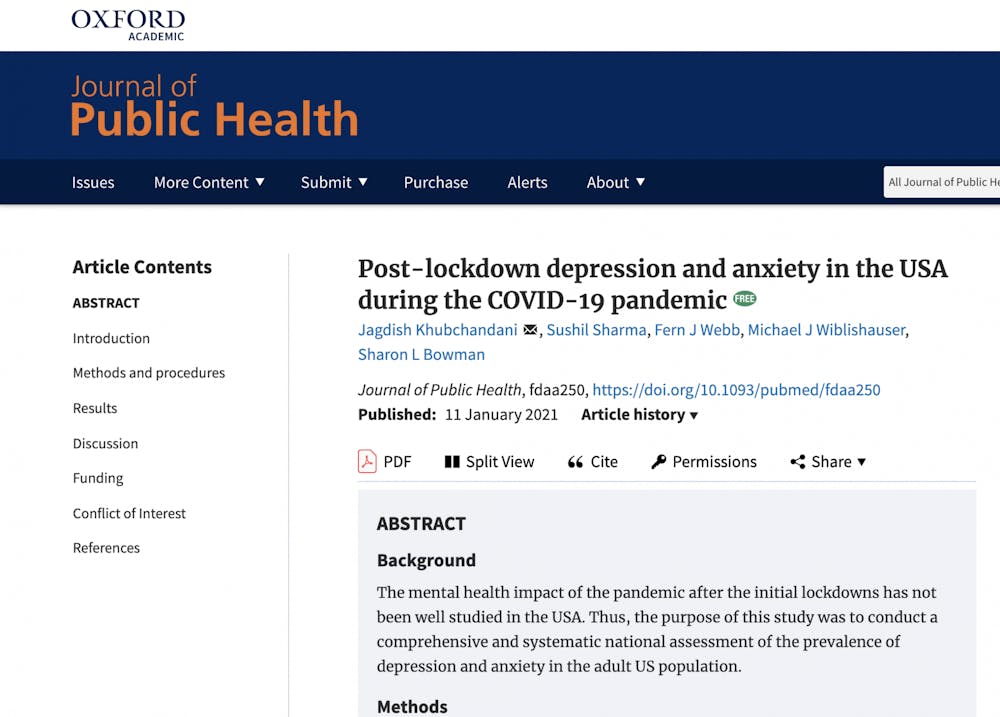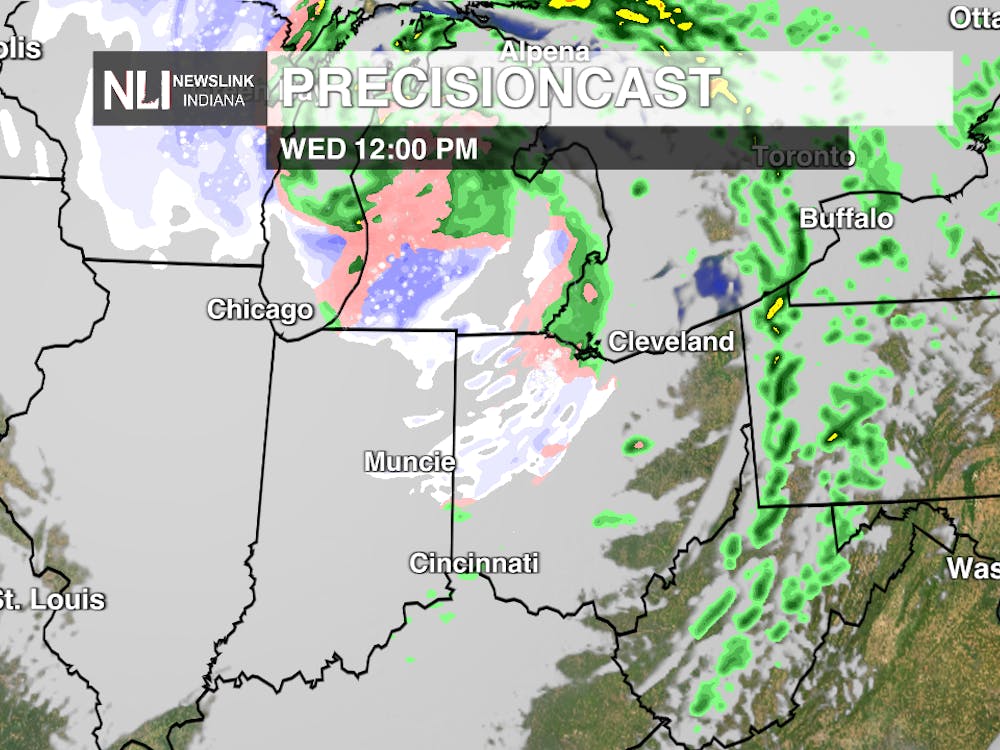MUNCIE, Ind.(NewsLink) -- Since March 2020, COVID-19 has caused a significant decline in mental health across the U.S., according to multiple studies. Recently, two Ball State faculty members teamed up with colleagues from multiple institutions to demonstrate how anxiety, depression and other mental health matters have more than doubled in a study of their own.
The study, titled “Post-lockdown depression and anxiety in the USA during the COVID-19 pandemic,” was published in the Journal of Public Health by Oxford University on Jan. 11, 2021.
Sharon Bowman is the department chair of Counseling Psychology, Social Psychology and Counseling who is licensed as a psychologist and mental health counselor, also with board certification in counseling psychology, is one of the Ball State faculty members involved in the study. The other is Sushil Sharma, Associate Dean of Operations of The Miller College of Business, who researched in the area of information systems. They both decided to get involved in different ways.
“It was [co-researcher Jagdish Khubchandani’s] project and he went looking for people to join him on the project, so he has a lovely mix of people and usually when he’s looking for something that touches on mental health, he will ask me if I will at least take a look at it and make sure that it makes sense...,” said Bowman.
“Information systems is my area, so when COVID-19 started, I observed a lot of information and misinformation. There were a lot of sources which were saying one way and other sources were saying another way so I shared this idea with one of my colleagues at that time who was also at Ball State… My interest was how technology is contributing positively or negatively, particularly in the COVID-19 situation,” said Sharma.
Bowman also noted that she has personally seen differences in her own graduate students.
“I’ve seen a major change in several ways. One, since probably early April of 2020, physically, campus has felt like summer school because so few people are physically around. No matter what time of year, as I walk through campus, the first couple of weeks of spring semester, if people weren’t wearing winter coats, I would have said ‘Yeah, it’s summer,’” Bowman said. “The conversations have changed because they almost always start with ‘How are you handling things? Oh, you’re sick? What kind of sick are you? What’s going on with you?’ The level of interaction has changed. It’s very hard to get to know people when you only see them from the shoulders up. As my own graduate students have said ‘I don’t come out of my house unless I’m going to my one class that’s a face to face class…’”
In order to measure the results, the research team distributed a questionnaire through Amazon’s mTurk software and social media. The questionnaire featured multiple different types of questions about the demographic of the person taking the survey, including their age, gender, marital status and family life, and how prevalent anxiety and depression were in their lives using the PHQ-4 scale.
According to the study, the results found that depression was found more often in 18 to 25-year-olds, males, Hispanics, married individuals, those with children at home, bachelor’s degree holders, full time and healthcare workers, those who make less than $60,000 a year and those from rural areas. Anxiety was higher for 18 to 25-year-olds, African-Americans, Hispanics, married people, those with children at home, bachelor’s degree holders, full time and healthcare workers, those who live in urban areas and those making less than $60,000 a year. Finally, moderate-to-severe psychological distress was mostly found in 18 to 40-year-olds, as well as several others previously listed which are in a full list in the study.
The typical ages for college students are seen in all three results and when asked why these ages are so affected by the pandemic, Bowman said “I think there are a couple of things. 18 year olds, if they are just coming out of high school, if they’re just beginning to start college or just beginning to move into the workforce, because not everyone goes to college and not everyone wants to go to college, if you’re at that stage and that’s what you’ve been thinking about for the last 17 years of your life,... and just as you’re ready to do that, everything around you says ‘nope, you’re not going anywhere…,’ you can’t. So, I think there’s a frustration at that age that extends on through to people in the late teens, early 20s… There's always an uncertainty when you're making a move, but this uncertainty coupled with simply being frozen is devastating."
Sharma added on to that, “You know, this is the age where you are more inquisitive to what's going on and this is the first time that many of them experienced, including ourselves, such a pandemic situation. So, one is that they're inquisitive and the second is that they're multitasking. They go to multiple sources of information."
When asked how to combat this decline in mental health, Bowman suggested a routine.
“If I spend all of my time on Zoom…, my routine is shot… I think people need a routine and as much as we’ve heard that said and it may seem kind of silly, I think we need to get up at a certain time, we need to go to bed at a certain time, we need to work on sleep hygiene…,” said Bowman.
And as far as Zoom fatigue? Sharma said “They should not surf too much of the large misinformation which is going around. If they can zero down to some of the reliable sources and they should look, there are a lot of reliable studies that have been published, and also the political narratives added a lot more after Aug. 2020.”
Sharma also said there will be another study released soon discussing mental health.












